【下記の日本語訳をご参照ください】
“ON the border LINE” was an exhibition based on re-examination of “border” in the current uncertain and chaotic modern times. Boundaries divide anything into two: this is science, this is not science; this is art, this is not art; this is seeing, this is hearing. What about the border itself? Much ambiguity is expected where boundaries are drawn. Students from the Dept. of Transdisciplinary Science and Engineering at Tokyo Tech explored and translated this concept into exhibits, and invited visitors to take a look at the world from various borderline perspectives.”
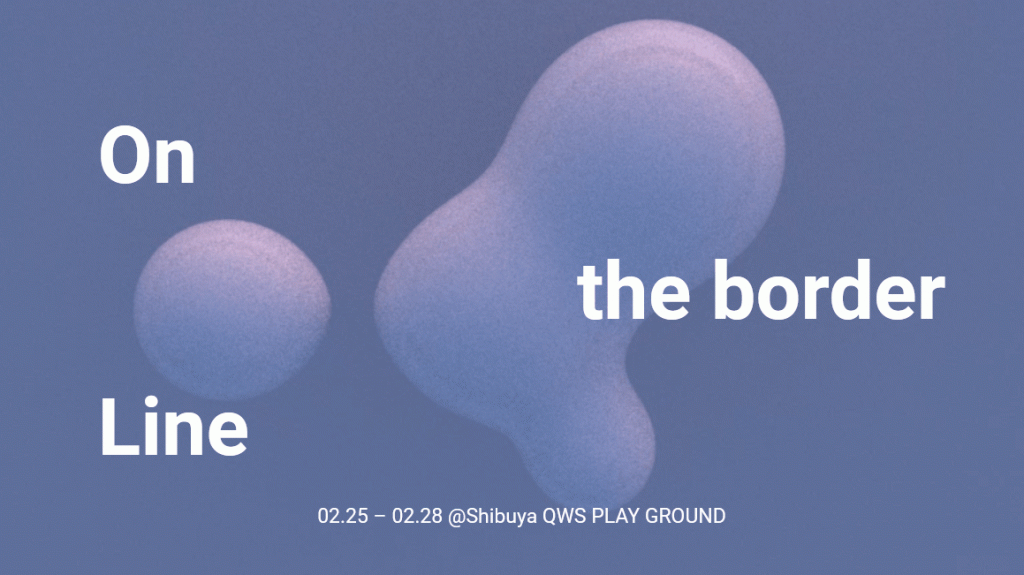
The exhibition was held on 25-28 February 2021 at the Playground of Shibuya Scramble Square QWS in Tokyo. Despite strict preventive measures put in place against COVID-19 infection, more than 160 people visited the space during the 4-day face-to-face exhibition. The project aimed to re-frame various ambiguous boundaries in modern times under the current disarrayed global condition.
In 2020, our ‘normal’ everyday activities were suddenly disrupted by the spread of COVID-19. Since then, human life has been significantly affected. Countless visible borders, such as masks and social distancing, have become indispensable. At the same time, the ‘new normal’ has redefined various views of the world. However, amidst these uncertainties and disorder, there must be something that can only be captured at this very moment. Based on this feeling, this exhibition was held to invite visitors to experience the feeling of standing on various overlooked borderlines.
The show was directed by Masamune Kawasaki, 2nd year Master’s student of the Engineering Sciences and Design course. A total of nine works from Tokyo Tech students were exhibited.
“Complex Tones (複雑系の音色)“ by Rei Sato
“If I didn’t see this work, I probably wouldn’t have encountered the world of quantum for the rest of my life…”
(impression from anonymous visitor)
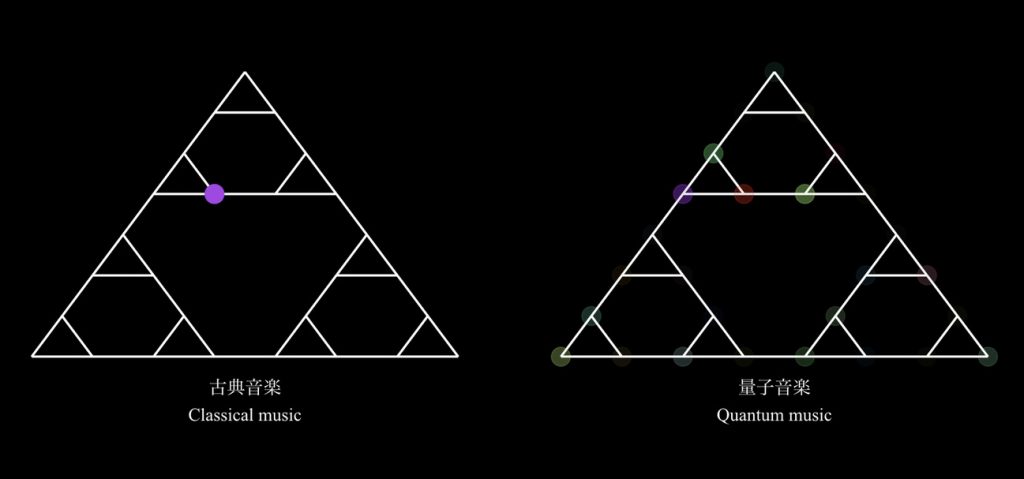
Making use of knowledge from his field of interest – physics research – Rei Sato brought the visitors to listen to his mysterious ‘quantum music’. Referring to music that operates in quantum mechanic ways, quantum music has been recently recognized as a new music technology mainly in Western Europe. These tones enabled visitors to hear previously unperceived quantum interaction through music. This works as a border that connects people and complex systems.
“8.6.8.15” by Chihiro Wada
“…we probably have been living while struggling to deal with this kind of dual opposition.” (impression from anonymous visitor)
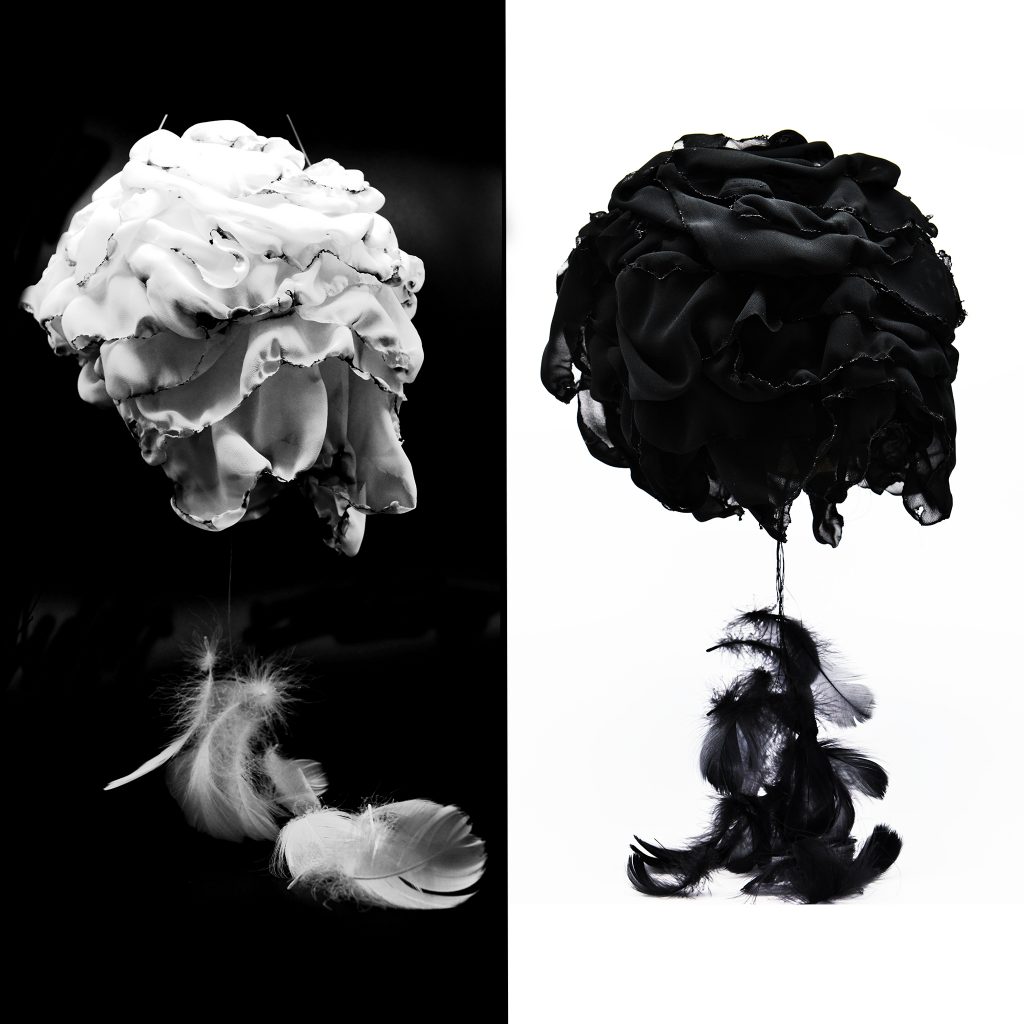
Using a black and white theme, Chihiro Wada expressed her personal view of science and technology. The title represents the atomic bombing that happened on August 6, 1945 at 8:15 in her hometown of Hiroshima, which was also the birth of her complex feelings toward science. Specializing in the field of Gender Studies of Humanities, her view toward science and technology gradually changed after enrolling in Tokyo Tech, a concept she tried to convey through this work.
“Your Touch Makes Me Fragrant“ by Yuke Wang
“The scent of artificial flowers was very mysterious. Just like a science fiction!” (impression from anonymous visitor)
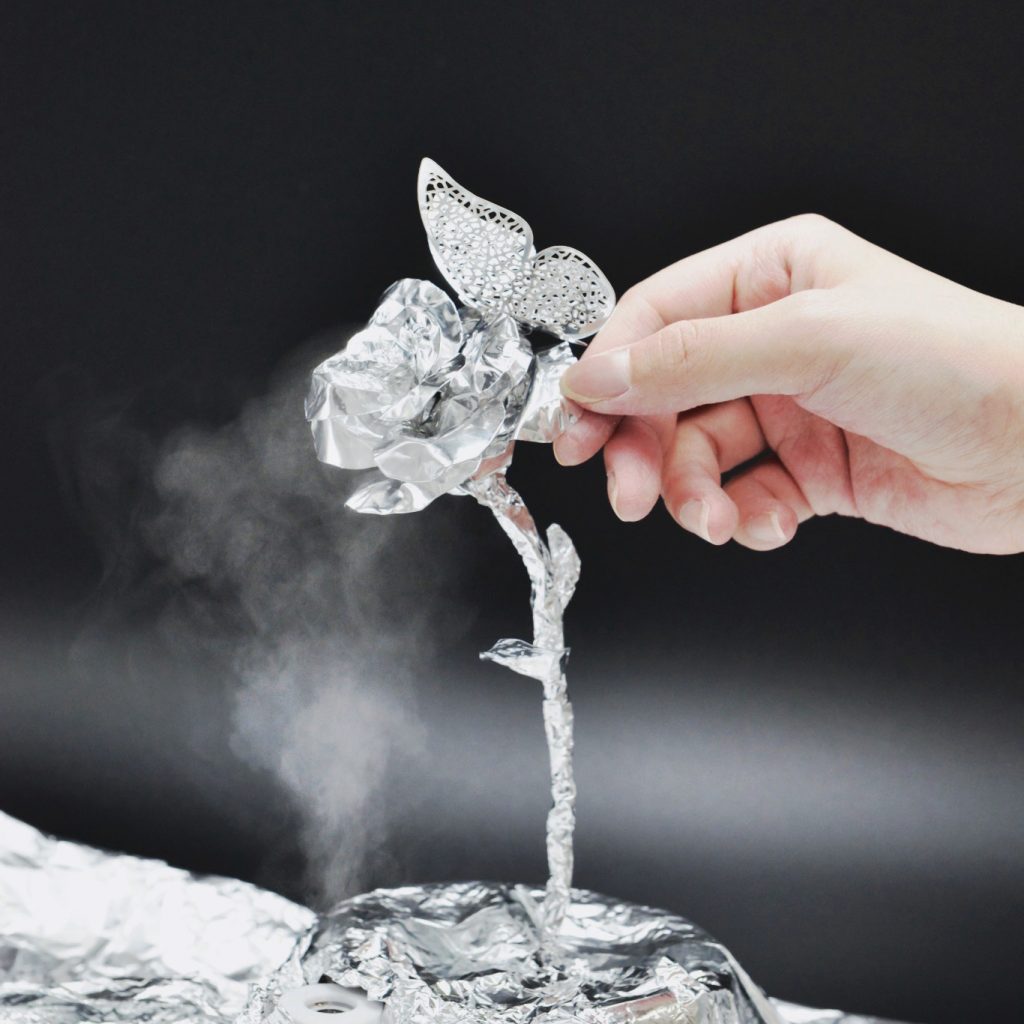
Through this ‘cyber flower’ interactive installation, Yuke Wang tried to explore the relationship between humans and artificial things. The ‘dead’ flower would become ‘alive’ with emotion and give out fragrance just like a real flower when coming in contact with a human. Having been working on olfactory research, Yuke Wang designed this artificial flower to give out a rose scent after being directly touched by the visitors.
“Border Between Us (私たちの間)” by Yamei
“I can watch this forever…” (impression from anonymous visitor)
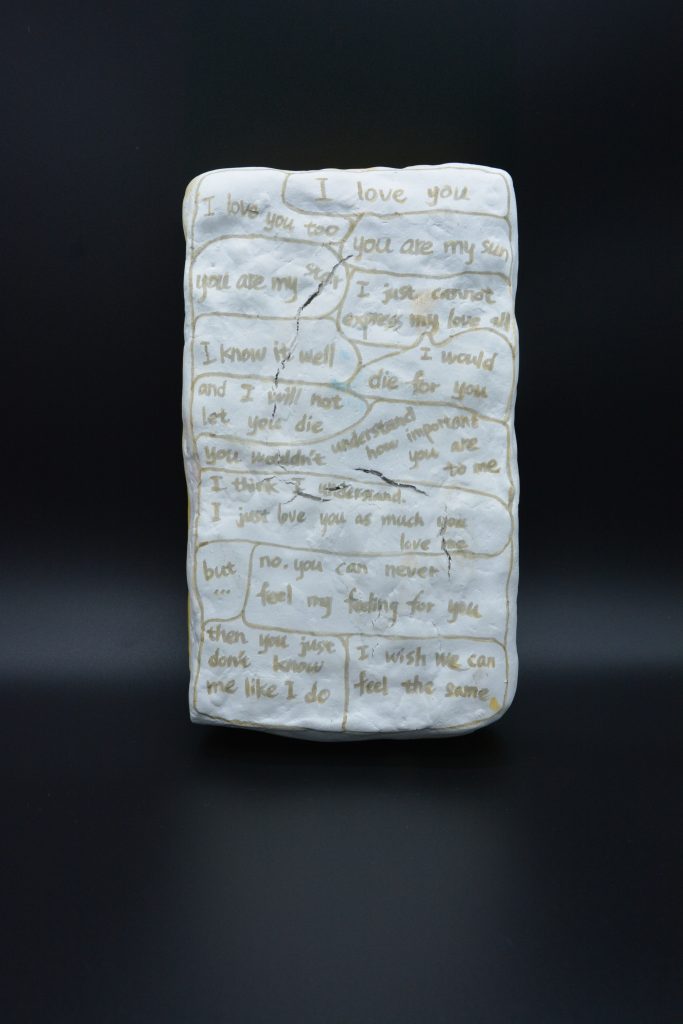
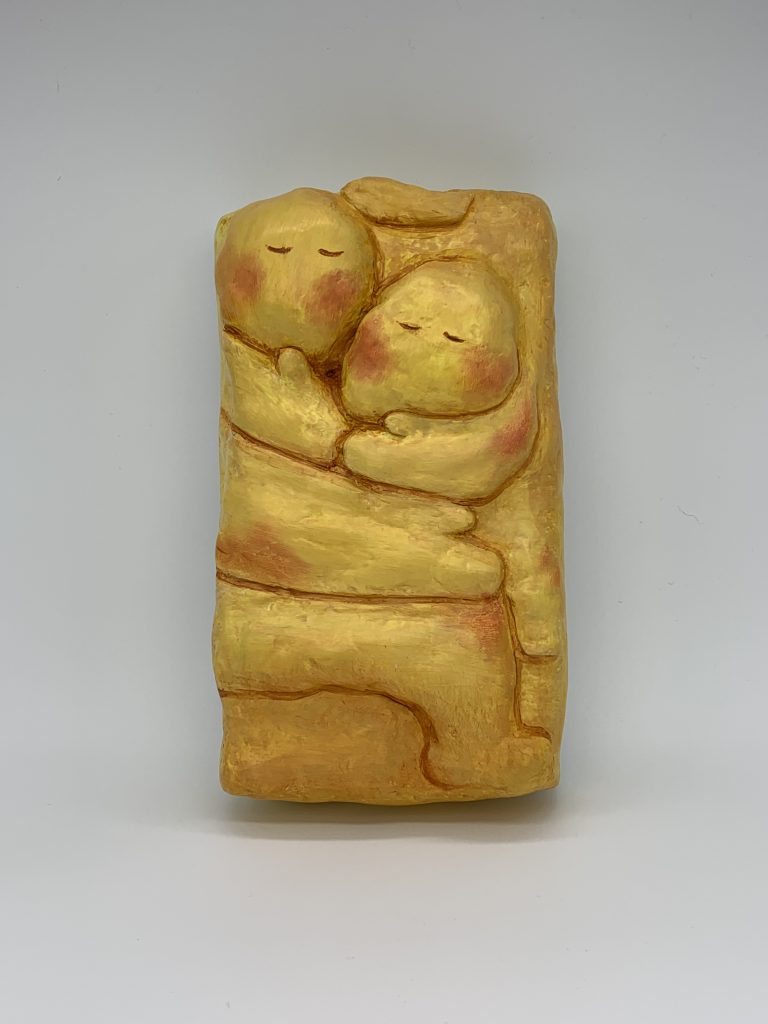
This sculpture work represented a mass of ‘love’, which exists with an unfilled gap. Through this work, Yamei expressed how ‘words’ are an important element in building relationships between people. The various expressions of love written on this work represent any means for people to express and listen, in the effort to understand and be understood. While the gap–border of communication exists forever, people are still yearning to build ‘love’ between them.
“Face Myself“ by Ayano Nagata
“I didn’t know that just by having something else replaced your own face, your mind could be affected this much.” (impression from anonymous visitor)
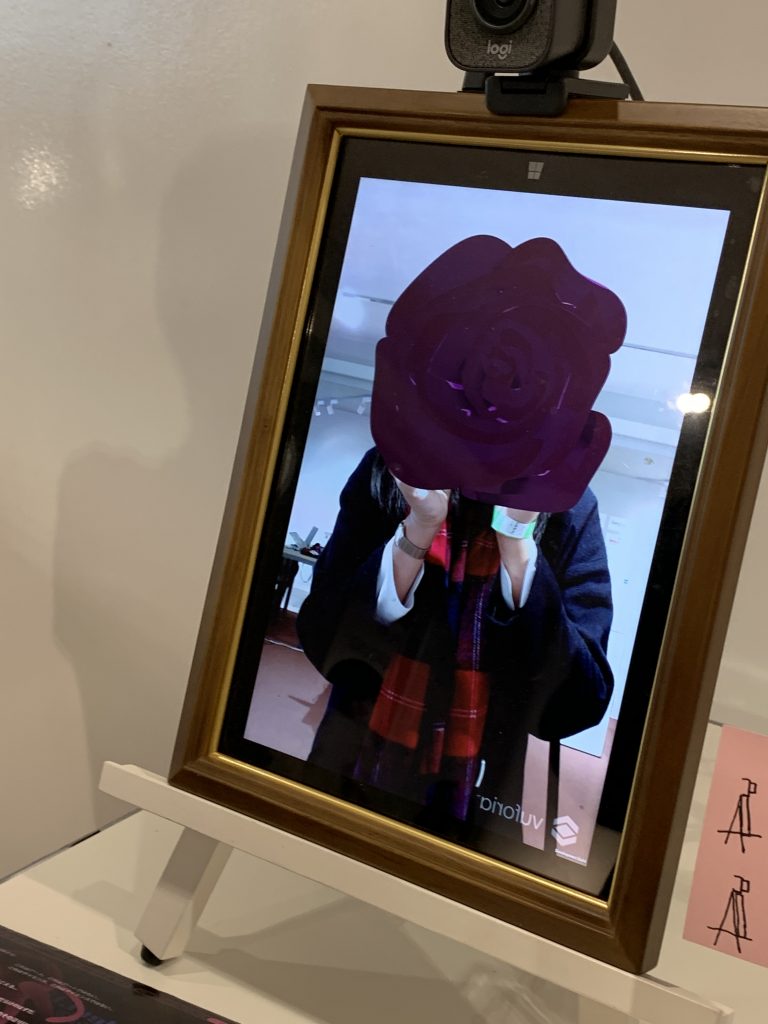
Inspired by the mask that has become part of everyday life during the Coronavirus pandemic, this interactive installation was designed as a ‘mirror’ that can show different ‘faces’ of oneself. Through this work, Ayano Nagata tried to realize the desire of ‘choosing body and fashion that can express one’s personality without being bound by natural body’ in the future. In this AR-based installation, visitors could have their face replaced by non-human avatars while still wearing masks.
“Society Apparatus (社会apparatus)“ by Farah Fauzia
“…I wonder if human also possess some kind of independent thing that will never get mixed.” (impression from anonymous visitor)

Making use of knowledge in Chemistry from her Chemical Engineering background, Farah Fauzia wanted to deliver the beauty of ‘layers’ that form in society. Through this colorful installation, visitors could directly see how various liquids would not blend even if they were mixed together due to their different characteristics. With this demonstration, she tried to convey her opinion that it should be fine to stay true to our own ‘color’ in society.
“The Boundary Line“ by Wang Hezheng
“This made me realize that the boundaries in the landscape are not just those created by humans.” (impression from anonymous visitor)
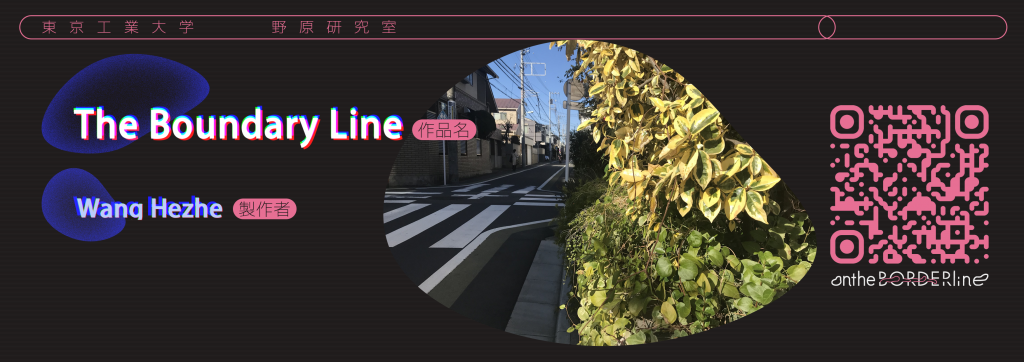
By following the hundreds of photos taken along the journey from Tokyo Tech to the Shibuya QWS venue that were displayed on the floor of exhibition hall, Wang Hezheng invited the visitors to re-discover the beauty of the inconspicuous scenery in daily life. Graduated from Architecture studies, she transformed the everyday landscape into novel scenery by noticing the ‘boundary line’ that divide the materials, colors, and spaces and let visitors to enjoy new perspectives.
“Rethinking the Subject (主体再考)“ by Tomohiro Ichikawa
“It was interesting to express the current social situation and the emotions of people living in it.”
(impression from anonymous visitor)
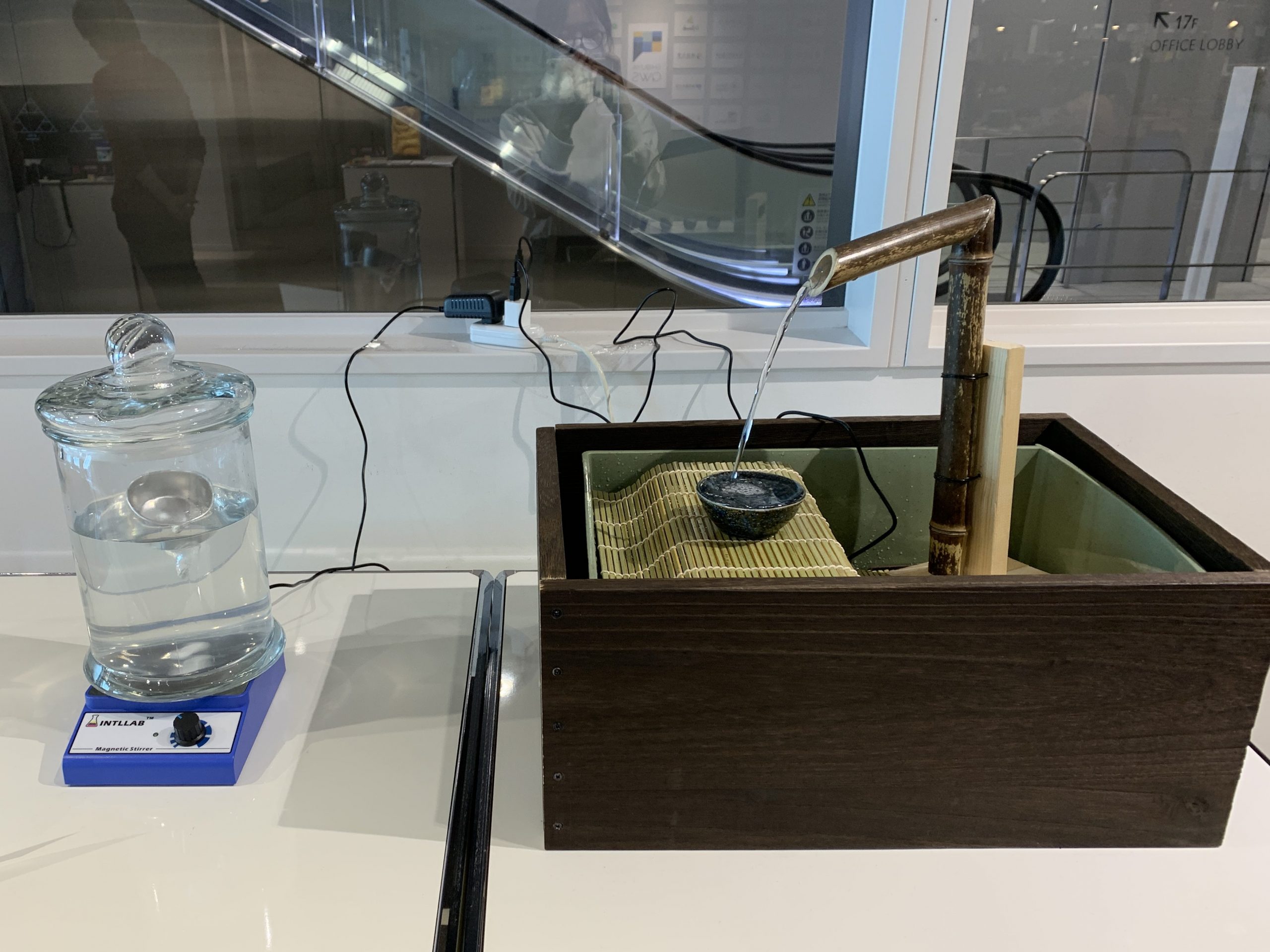
This work expressed two systems – open and closed – using the flow of water. Tomohiro Ichikawa wanted to convey his view that current society – in chaos due to forces such as capitalism and the Coronavirus pandemic, has divided people into independent subjects. Having major interest in Psychology research, he tried to re-question the whole situation by positioning the ‘subject’ from different point of view together with the visitors.
“Is it evolution or erosion (進化か、侵食か)“ by Natsumi Kato and Yuke Wang
“It was beautiful to contrast technology and tradition.” (impression from anonymous visitor)
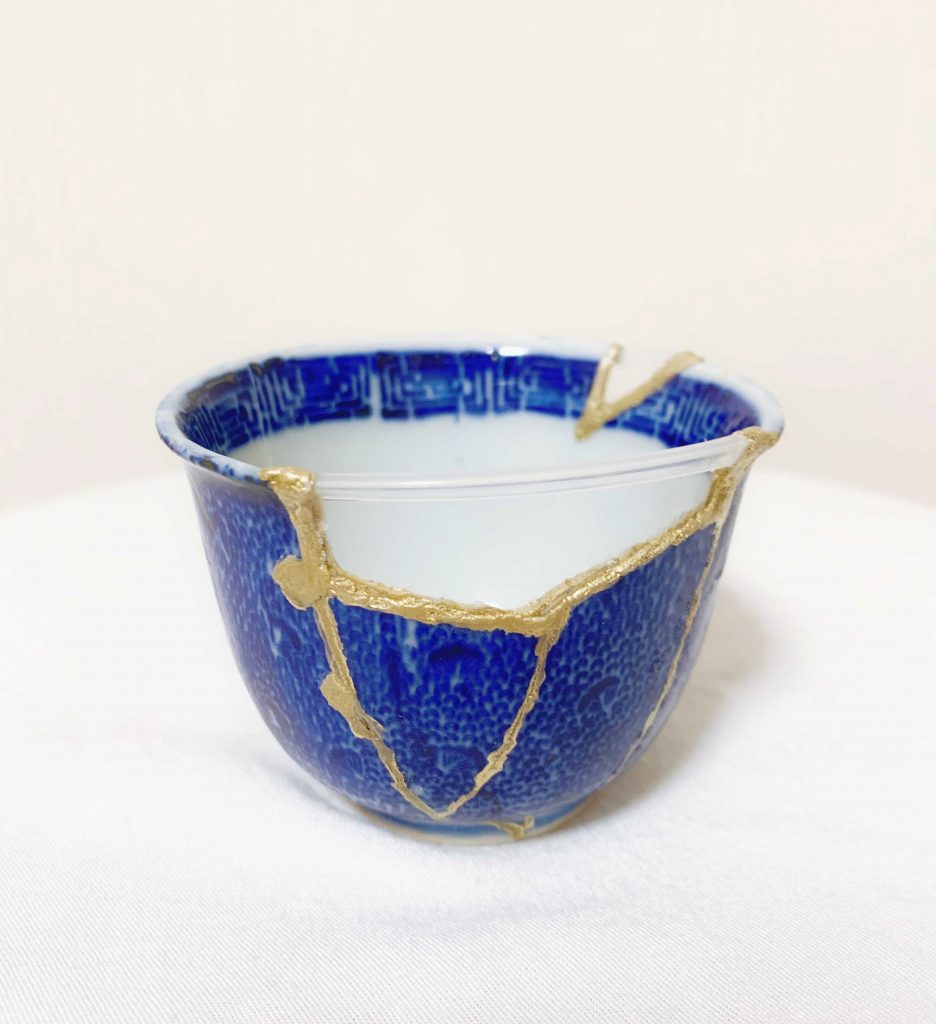
Using Kintsugi (金継ぎ) to connect traditional ceramic vessels and modern plastic cups, Kato and Wang tried to question the value of new things. As human lives become more efficient, some value is added but some is lost when things become more convenient. Is it evolution, or is it erosion? The set of new things born from different value aimed to ask such question to the visitors.
AA
During the exhibition, visitors from diverse background could enjoy the exhibits while interacting with the students from Tokyo Tech. The communication went beyond the simple explanation of their works, and reached a phase of re-questioning of various concepts and thoughts. Among the most notable impressions from the visitors, some pointed out how the concept from each exhibit managed to be conveyed in an easy-to-understand manner compared with the usual art exhibitions. This was probably made possible due to integration of science and art as basis for the show.
This event is the first student-centered project conducted as part of the Satellite Lab STADHI of Tokyo Tech World Research Hub Initiative (WRHI), which aims to integrate science/technology with art/design and is organized by Nohara laboratory led by Prof. Kayoko Nohara. Among the supporters, Prof. Masahiko Hara and Dr. Giorgio Salani from Tokyo Tech acted as technical advisors, with Dr. Heather Barnett from Central Saint Martins, University Arts London, as honorary advisor.
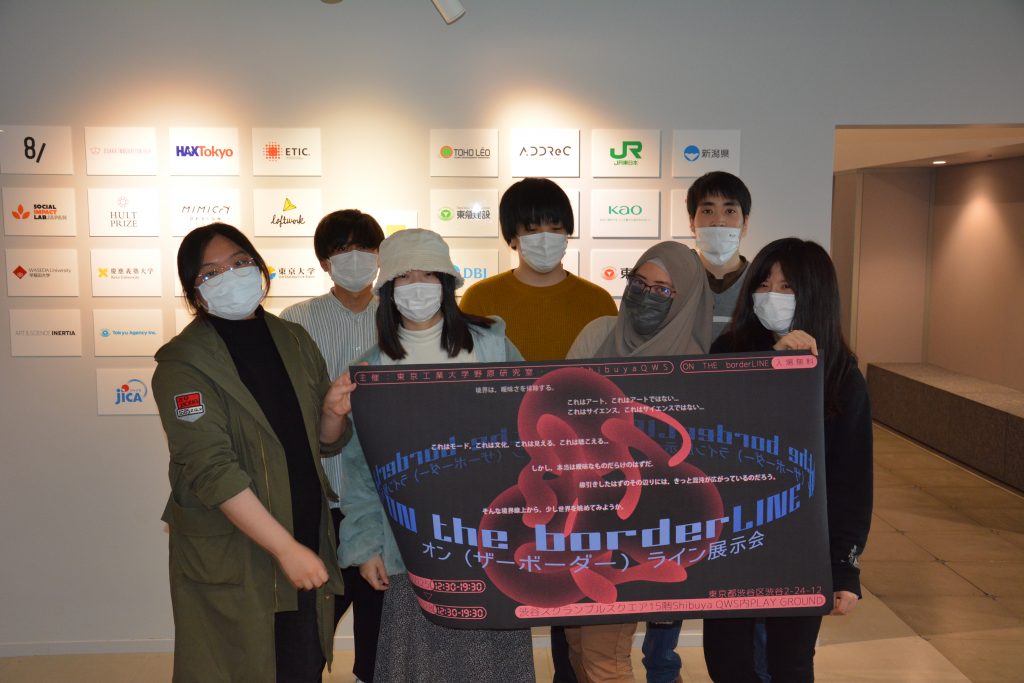
Written by Farah Fauzia
「ON the borderLINE」は、先の見えない混沌とした現代における「境界:Border」を見つめ直すことに基づく展覧会でした。境界は物事を二分します。これはサイエンス、これはサイエンスではない/これはアート、これはアートではない。しかし境界線上はどうでしょうか。きっと、多くのあいまいさからどっちつかずの混沌とした世界が広がっています。東京工業大学の融合理工学系の学生たちは、このコンセプトを調査して展示に変換し、観客たちをさまざまな境界線上で世界を見ることに誘いました。
展示会は2021年2月25日から28日まで東京の渋谷スクランブルスクエアQWSのPlaygroundで開催されました。COVID-19感染に対する厳格な予防措置が講じられているにもかかわらず、4日間の対面展示会では160人以上がこのスペースを訪れ、東京工業大学の学生による合計9作品を楽しみました。
アートワークの詳細についてはこちら(https://ontheborderline.myportfolio.com/work)。